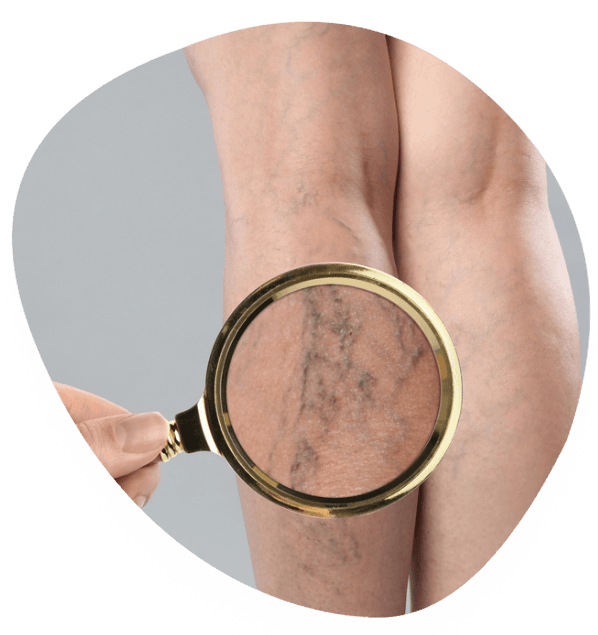Vein
Get Your Legs Ready!
Your experience matters to our team of Harvard-trained, Ivy League physicians.
With a blend of clinical excellence and genuine compassion, we’re committed to helping you find the most effective solution for your varicose veins.Whether you’re dealing with discomfort—such as aching, cramping, bulging veins, tightness, or skin discoloration—or are simply concerned about the appearance of your veins, we’ll work closely with you to create a personalized care plan that meets your needs.

Varicose Veins

Spider Veins
What are varicose veins?
These veins appear swollen and twisted just beneath the skin’s surface, often resembling cords in shades of blue, purple, or red. They develop due to weakened vein walls, which can cause blood to pool and lead to inflammation.
While sometimes just a cosmetic concern, varicose veins can also cause pain and discomfort—and if left untreated, may lead to more serious health issues. Symptoms may include burning, throbbing, swelling, muscle cramps, itching, skin discoloration, aching, a heavy sensation in the legs, and increased discomfort after prolonged periods of standing or sitting.
Do I have varicose veins?

At the Forefront of Education & Clinical Excellence
Comfort and transparency define the patient experience at Cellara Pain Institute. With advanced pain fellowship training from Harvard, our distinguished Harvard-trained physicians uphold the highest standards of clinical excellence and continuously engage in ongoing education to remain at the forefront of innovations in pain management and wellness.
As specialists in pain relief, our mission is to deliver long-lasting care that addresses the whole person. We combine cutting-edge procedures with deep compassion and understanding to ensure a comprehensive, patient-centered approach. Powered by state-of-the-art technology, Cellara Pain Institute is proud to offer you and your loved ones a broad range of advanced and alternative treatment options tailored for lasting relief.
Vein FAQ
There are several effective treatment options available for varicose veins,
and the best approach depends on the severity of the condition and the individual’s symptoms. Common treatment methods include:
Leg Elevation
Raising the legs above heart level can help reduce swelling and improve circulation. This technique is especially helpful for managing mild to moderate varicose veins.Compression Stockings
These specially designed garments apply gentle pressure to the legs, promoting better blood flow and reducing swelling. They help prevent blood from pooling in the veins.Sclerotherapy
A minimally invasive procedure where a solution is injected directly into the affected veins. This causes the vein to collapse and eventually fade, redirecting blood to healthier veins.Thermal Ablation
This minimally invasive technique uses heat—delivered through a small catheter—to seal off and destroy problematic veins. The damaged veins are eventually absorbed by the body.Vein Ligation and Stripping
Recommended for more severe cases, this surgical procedure involves tying off and removing damaged veins through small incisions. It’s generally used when other treatments are not effective.
The effectiveness of varicose vein treatment can vary from person to person.
In some cases, the treated veins may disappear entirely, while in others, they may become less noticeable and no longer cause symptoms. Treatment often improves the appearance of varicose veins and helps reduce the risk of complications.
However, it’s important to note that varicose veins can sometimes return, even after treatment.
If you’re concerned about varicose veins, schedule an evaluation with Cellara Pain Institute. We offer a range of treatment options, and the best choice for you will depend on your specific symptoms and medical history. With the right care, you can enhance both the appearance of your veins and your overall vein health.
Spider veins are a related but less severe condition that affects smaller blood vessels near the surface of the skin.
They often appear red or blue and may resemble a spider web or branching tree. Like varicose veins, spider veins are caused by similar underlying factors, such as weakened vein valves or poor circulation. While typically considered a cosmetic concern, spider veins can sometimes lead to discomfort or health issues if not addressed.
